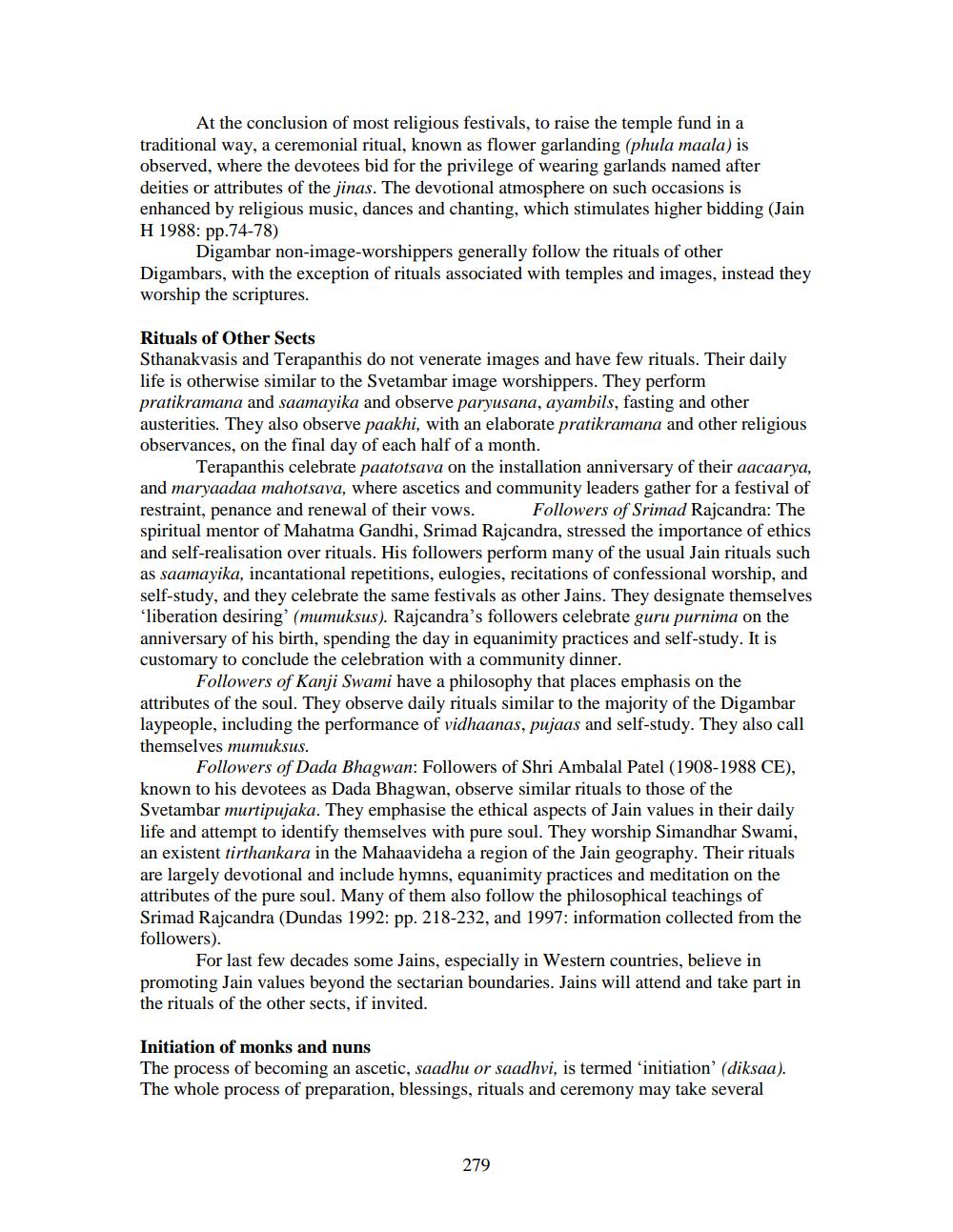________________
At the conclusion of most religious festivals, to raise the temple fund in a traditional way, a ceremonial ritual, known as flower garlanding (phula maala) is observed, where the devotees bid for the privilege of wearing garlands named after deities or attributes of the jinas. The devotional atmosphere on such occasions is enhanced by religious music, dances and chanting, which stimulates higher bidding (Jain H 1988: pp.74-78)
Digambar non-image-worshippers generally follow the rituals of other Digambars, with the exception of rituals associated with temples and images, instead they worship the scriptures.
Rituals of Other Sects Sthanakvasis and Terapanthis do not venerate images and have few rituals. Their daily life is otherwise similar to the Svetambar image worshippers. They perform pratikramana and saamayika and observe paryusana, ayambils, fasting and other austerities. They also observe paakhi, with an elaborate pratikramana and other religious observances, on the final day of each half of a month.
Terapanthis celebrate paatotsava on the installation anniversary of their aacaarya, and maryaadaa mahotsava, where ascetics and community leaders gather for a festival of restraint, penance and renewal of their vows. Followers of Srimad Rajcandra: The spiritual mentor of Mahatma Gandhi, Srimad Rajcandra, stressed the importance of ethics and self-realisation over rituals. His followers perform many of the usual Jain rituals such as saamayika, incantational repetitions, eulogies, recitations of confessional worship, and self-study, and they celebrate the same festivals as other Jains. They designate themselves ‘liberation desiring' (mumuksus). Rajcandra's followers celebrate guru purnima on the anniversary of his birth, spending the day in equanimity practices and self-study. It is customary to conclude the celebration with a community dinner.
Followers of Kanji Swami have a philosophy that places emphasis on the attributes of the soul. They observe daily rituals similar to the majority of the Digambar laypeople, including the performance of vidhaanas, pujaas and self-study. They also call themselves mumuksus.
Followers of Dada Bhagwan: Followers of Shri Ambalal Patel (1908-1988 CE), known to his devotees as Dada Bhagwan, observe similar rituals to those of the Svetambar murtipujaka. They emphasise the ethical aspects of Jain values in their daily life and attempt to identify themselves with pure soul. They worship Simandhar Swami, an existent tirthankara in the Mahaavideha a region of the Jain geography. Their rituals are largely devotional and include hymns, equanimity practices and meditation on the attributes of the pure soul. Many of them also follow the philosophical teachings of Srimad Rajcandra (Dundas 1992: pp. 218-232, and 1997: information collected from the followers).
For last few decades some Jains, especially in Western countries, believe in promoting Jain values beyond the sectarian boundaries. Jains will attend and take part in the rituals of the other sects, if invited.
Initiation of monks and nuns The process of becoming an ascetic, saadhu or saadhvi, is termed 'initiation' (diksaa). The whole process of preparation, blessings, rituals and ceremony may take several
279




